TL;DR
A 20‑foot diameter, roughly 2‑foot-deep hole can be transformed into a sunken fire pit, rain garden, koi-friendly water feature, or a gravel-and-paver patio with built-in seating. If you prefer to erase it, plan on about 23 cubic yards of fill to return the yard to grade; otherwise, use the existing depth to gain wind protection, privacy, and drama.
2 options fix a 20‑ft, 2‑ft-deep yard pit fast: reuse it or fill ~23 yd³ (TL;DR)

A 36–48 inch path ensures smooth circulation connecting key backyard features seamlessly.
Here’s the snippet-ready answer: Keep the circle and turn it into a sunken fire pit, rain garden, or patio, or erase it with roughly 23 cubic yards of fill; all are practical landscaping ideas that boost curb appeal. Before you dig or dump, visualize the best hardscaping design for your yard in minutes. At a Glance: - Conversion choices: sunken fire pit, rain garden/bioswale, water garden or koi pond, gravel-and-paver patio with seat wall. - Key site checks: drainage test, setback from house/fences, prevailing wind, utilities marked (811 in the U.S.). - Cost notes: filling the hole = ~23 yd³ of fill; compacted gravel base for a patio = ~6–8 yd³; steel fire ring + gravel seating = budget-friendly. - Safety: many codes want 10–25 ft from structures for open fire; avoid pits under trees; plan for runoff management. - Next step: Try your own exterior layout instantly on ReimagineHome.ai: https://www.reimaginehome.ai/?utm_source=blog
36–48 inches of path width makes any backyard makeover work (Introduction)

36–48 inch paths create comfortable circulation for any backyard makeover.
Landscaping and hardscaping thrive on good circulation, and most landscape designers recommend 36–48 inches for primary garden paths that lead to features like a sunken fire pit or pond. Your 20‑foot circle already defines a destination; the win is connecting it with a graceful, well-lit walkway and a clear use. Alt: “Twilight scene of a circular gravel court with a stone fire pit, ringed by native grasses and step lighting, visualized in ReimagineHome.ai.” Caption: “ReimagineHome.ai helps you compare fire pit sizes, seating rings, and planting layers before you commit.”
Anecdote
A homeowner in Los Angeles turned a misfit side yard into a cinematic, stone-lined walkway by keeping the grade change and carving 42‑inch meanders that widened near a bench—proof that constraints make character.
50–70% of low‑maintenance yard budgets go to hardscaping (Why Landscaping & Hardscaping Are Changing)

Hardscaping commands 50–70% of low-maintenance yard budgets for patios and walkways.
Hardscape elements often make up 50–70% of low‑maintenance yard budgets because patios, walkways, and stone edges reduce weekly chores. In your case, reusing the excavated space as a hardscaped outdoor living zone can save thousands versus hauling in soil and regrading. - 1–2% slope sheds water from patios and paths, preventing puddles in a sunken feature. - 2700–3000 K is the sweet spot for outdoor lighting color temperature, giving warm curb appeal and safe footing. - 4–6 inches of compacted 3/4" gravel is a reliable base for pavers; finish with 1 inch of setting sand for crisp joints. Alt: “Overhead plan of a 20‑ft round patio with a 6‑ft fire bowl, curved seat wall, and two 42‑inch paths, rendered in ReimagineHome.ai.” Caption: “See multiple hardscaping design options—stone patio, privacy planting, walkway ideas—in seconds.”
4 high‑impact designs fit a 20‑ft circular footprint (Key Trends)

Four high-impact yard designs that maximize a 20-foot circular footprint for diverse outdoor living.
A 20‑foot circle gives you 314 square feet to play with, and four proven landscaping ideas fit that footprint elegantly.
18–24 inches: ideal seat height for a sunken fire pit bench
Hardscaping design shines with a sunken fire pit in the center (36–48 inches in diameter) and a crushed stone floor for drainage. Build a low retaining ring from stone or steel, add a 4–6 inch gravel layer beneath, and carve a bench into the perimeter berm at an 18–24 inch seat height. Keep 10–25 feet from structures, and add a 6–12 inch gravel band beyond the bench for ember safety. For low smoke, consider a smokeless steel insert or an under-cap air channel.
6–12 inches: the depth range for a rain garden’s forebay
Landscaping for drainage often starts with a rain garden that captures roof or lawn runoff in a shallow bowl and filters it through amended soil. In your circle, create a 6–12 inch forebay where downspouts enter, then step the bed to 12–18 inches at center with sandy loam and compost. Plant native species tolerant of wet-dry cycles—think blue flag iris, switchgrass, and Joe Pye weed—and ring the rim with river stone to stop erosion. A rain garden acts like a bioswale, improves groundwater recharge, and keeps mosquitoes at bay by draining within 24–48 hours.
24–36 inches: winter depth many koi need in mild climates
Garden design with water is magnetic, and a koi pond or wildlife water garden can start in your existing excavation. Deepen a central zone to 24–36 inches (or more in cold climates), add a flexible liner over an underlayment, and stack a perimeter of stone for a natural edge. Include a skimmer and a small biofalls; add a 2–3 foot pebble beach for easy access and frogs. If fish aren’t your thing, a plant-rich reflecting pond with lilies and a bubbler delivers the same serenity with lower maintenance.
4–6 inches: the compacted gravel base for a paver patio
Hardscaping ideas for instant usability include converting the circle to a gravel-and-paver patio with a steel or stone fire ring. Compact 4–6 inches of base gravel across the 20‑foot circle (about 6–8 yd³), add 1 inch of sand, then lay pavers or large-format stone. Consider a curved seat wall 16–18 inches high on the high side of the circle and a 36–48 inch path to your existing patio for a continuous outdoor living loop. Edge the ring with steel or stone to keep the geometry crisp.
Alt: “Daytime view of a rain‑garden planting palette—iris, grasses, and coneflower—stepped into a circular basin, designed in ReimagineHome.ai.” Caption: “Test rain garden depths, planting plans, and stone edging before you trench.”1 photo is all you need to test layouts in ReimagineHome.ai (How to Use ReimagineHome.ai)

Test your backyard hardscape layouts instantly with just one photo using ReimagineHome.ai.
1 photo is all you need to test landscaping and hardscaping layouts in ReimagineHome.ai—and to swap materials, seating, and planting arrangements instantly. Upload a clear yard photo, select exterior/landscape mode, and iterate through modern landscaping ideas for small front yards, backyard makeover options, and pool-and-patio design—without moving a shovel. - 3–5 variations per concept help you compare stone patio textures, privacy planting layers, and outdoor lighting design. - 2 minutes: typical time to spin a new look from your original photo. - 1 click saves your favorite scheme to share with a contractor or to price materials. Explore more on the blog: - How to design low‑maintenance hardscaping: https://www.reimaginehome.ai/blogs/low-maintenance-hardscaping-guide?utm_source=blog - Best materials for backyard patio and fire pit: https://www.reimaginehome.ai/blogs/stone-patio-and-fire-pit-materials?utm_source=blog - Outdoor lighting that flatters plants and stone: https://www.reimaginehome.ai/blogs/outdoor-lighting-design?utm_source=blog
Visualization Scenario
Upload a photo of your 20‑foot circle to ReimagineHome.ai, test a 6‑foot fire bowl versus a rain garden with a stone rim, swap pea gravel for large-format pavers, and preview 2700 K path lights—then export the winner for quotes.
10–25 feet is the typical fire‑pit setback from structures (FAQ)
Most hardscaping projects start with clear, code-aware questions. Here are quick answers. - How much dirt to fill a 20‑ft by 2‑ft hole? About 23 cubic yards (π × 10² × 2 ft = 628 ft³; divide by 27). Order 10–15% extra for compaction. - Is a sunken fire pit safe near the house? Many areas require 10–25 feet of clearance from structures and trees; always verify local code and wind patterns. - What’s the best base for a paver patio? Use 4–6 inches of compacted 3/4" gravel plus 1 inch of sand; aim for 1–2% slope away from buildings. - How do I prevent weeds under gravel? Cardboard underlayment topped with 3–4 inches of stone is effective and easier to live with than fabric long term. - Will a rain garden breed mosquitoes? No, properly built rain gardens drain within 24–48 hours, breaking the mosquito life cycle. - What pond depth works for koi? 24–36 inches minimum in mild regions; 36–48 inches where winters freeze. Add aeration and de-icer as needed. - How wide should paths be? 36–48 inches for primary routes; 24–30 inches for secondary meanders. - Do I need permits? Fire features, ponds, and retaining rings sometimes require permits; call 811 before digging to locate utilities.
3 real builds prove a sunken circle can become a destination (Real‑World Stories)
3 examples show how a “mistake” becomes a magnet for daily life when you lean into landscaping and hardscaping. - 1 weekend: A homeowner in Ohio turned a pool void into a gravel conversation pit with a 42‑inch steel ring, 24 inches of built‑in benching carved from the berm, and solar step lights. Cost stayed low by using gravel and a secondhand ring. - 2 levels: In Phoenix, a couple shaped their 20‑foot circle into a two-tier rain garden—6 inches at the rim, 16 inches at the center—directing two downspouts via a dry creek. Blooms, butterflies, and zero standing water. - 4 pieces: A coastal Carolina family deepened the center to 30 inches, lined the basin, set a bubbler, and added three stone pads for chairs. The water garden cools summer air and hums in the evenings. Landscaping ideas are best tested visually; use https://www.reimaginehome.ai/?utm_source=blog to see stone, steps, seating, and planting in context before you commit.
.svg)

.svg)



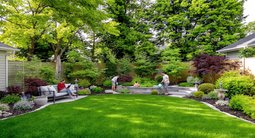
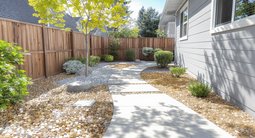
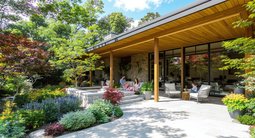
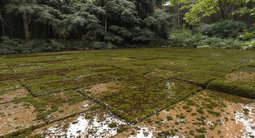
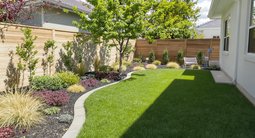
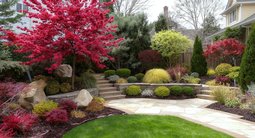





.png)